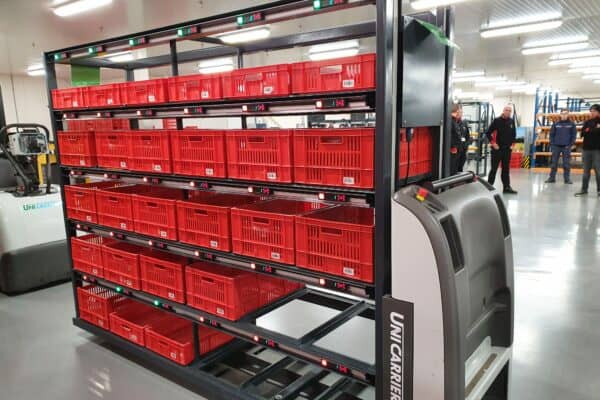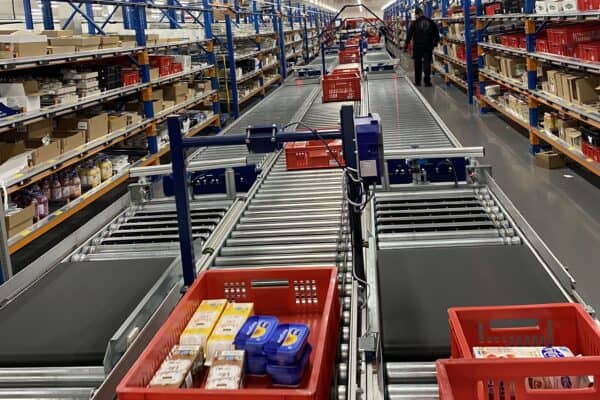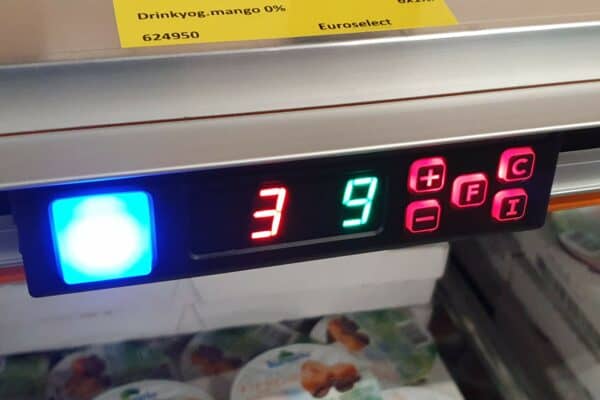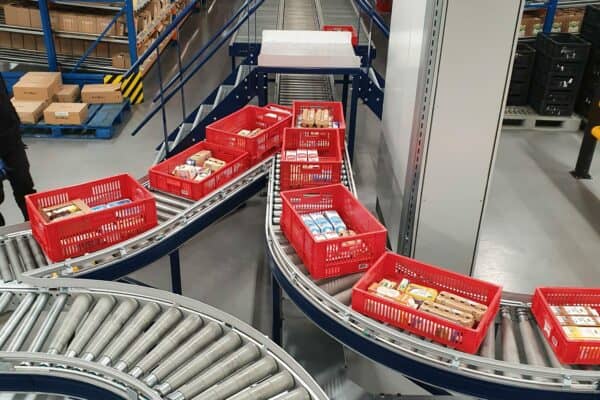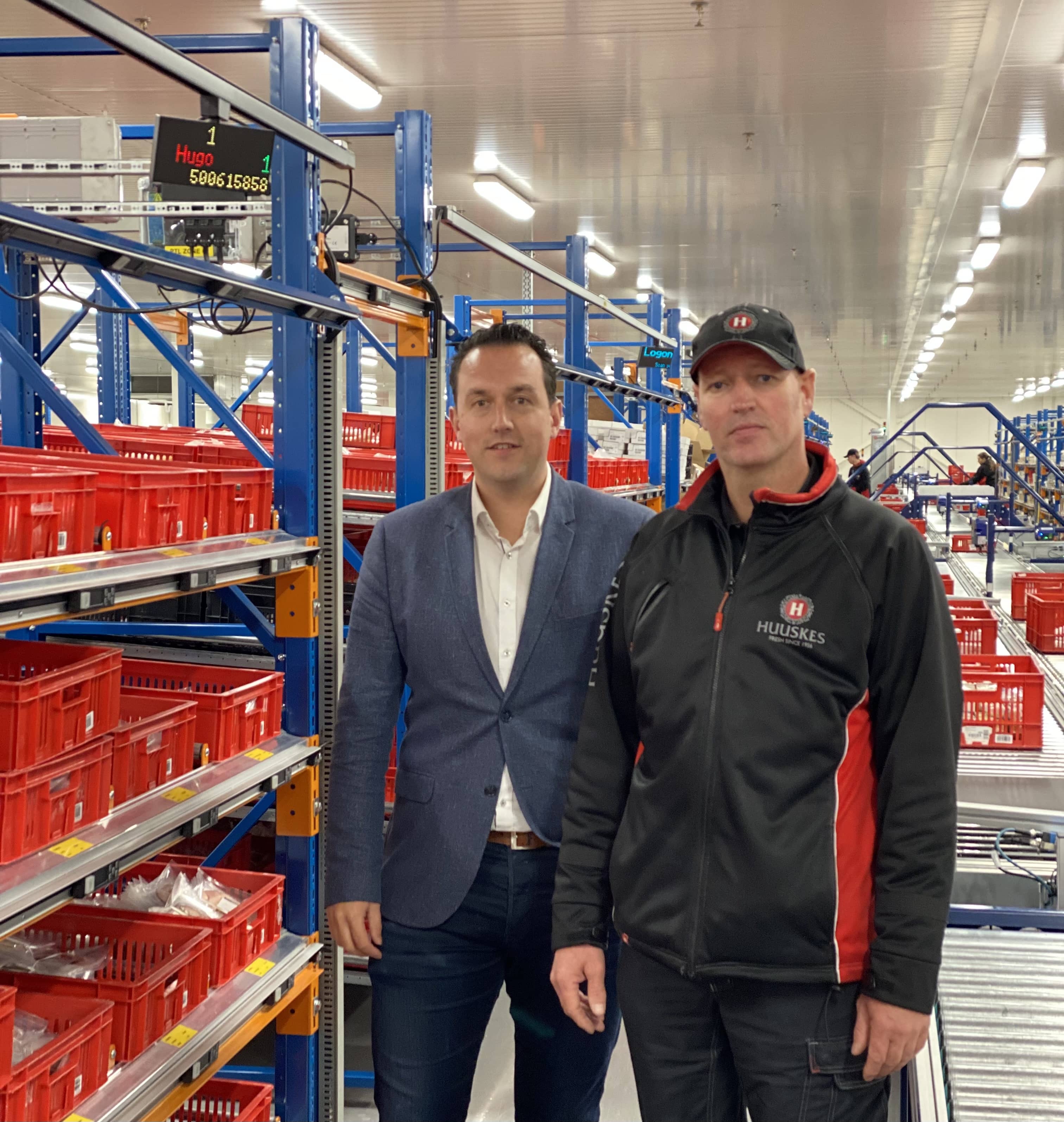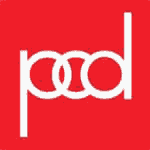Foodservice specialist Huuskes has increased its order picking capacity with a combination of zone picking, pick carts and Pick to Light technology. Pcdata has delivered a turn-key solution and as system integrator, it was responsible for the control and integration of the transport system. The result is a scalable system that enables Huuskes to grow in volume by fifty percent over the next few years. Hugo Abbink, department manager chilled products at Huuskes, is pleased with the system: “We can now process more orders with the same number of people.”
Since its start in 1956, Huuskes has grown into a nationally operating supplier, producer and knowledge partner in food and beverages for healthcare and corporate catering. The company, originally from Twente in the Netherlands, not only acts as a wholesaler, but also has its own butcher’s shop, poultry plant, vegetable cutting plant and kitchen. There, Huuskes prepares thousands of food components and meals every day that can be delivered to the catering industry, care institutions and hospitals throughout the Netherlands on a group and individual basis.
The growth of the company forced Huuskes to open a new logistics center in January 2018. At the existing location in the east of Enschede there was no more space. “By moving the logistics to the west of Enschede, we can grow the production again,” explains Abbink. “The food components, meals and other products that we produce elsewhere arrive at the logistics center in crates that are de-palletized and sorted by route fully automatically. We add a variety of chilled and fresh products, such as dairy products, salads, juices, meat products and other groceries from the refrigerated section.”
Congestion in aisles
In the fall of 2020, Huuskes put a completely new order picking system for chilled and fresh products into operation. The old system could no longer handle the growing number of order lines. “We were using pick carts that were equipped with Pick to Light displays just like the pick locations. A great way of working, but the capacity was limited. In order to process more order lines, we could have used even more order pickers with even more carts, but that would have only led to traffic jams in the aisles. We had to find another solution,” Abbink explains.
At a trade fair, Huuskes came into contact with Pcdata, which demonstrated the benefits of zone picking. During a visit to Holland & Barrett’s logistics center in the UK, Abbink and his colleagues became convinced of the advantages of this concept. At the heart of the concept is a transport system that routes crates destined for customers to pick locations. Order pickers do not have to walk along the racks themselves with carts full of crates, but can stay in their own zone. “This system enables us to process many more orders with the same number of people and still create more calm and control on the shop floor,” explains Abbink.




